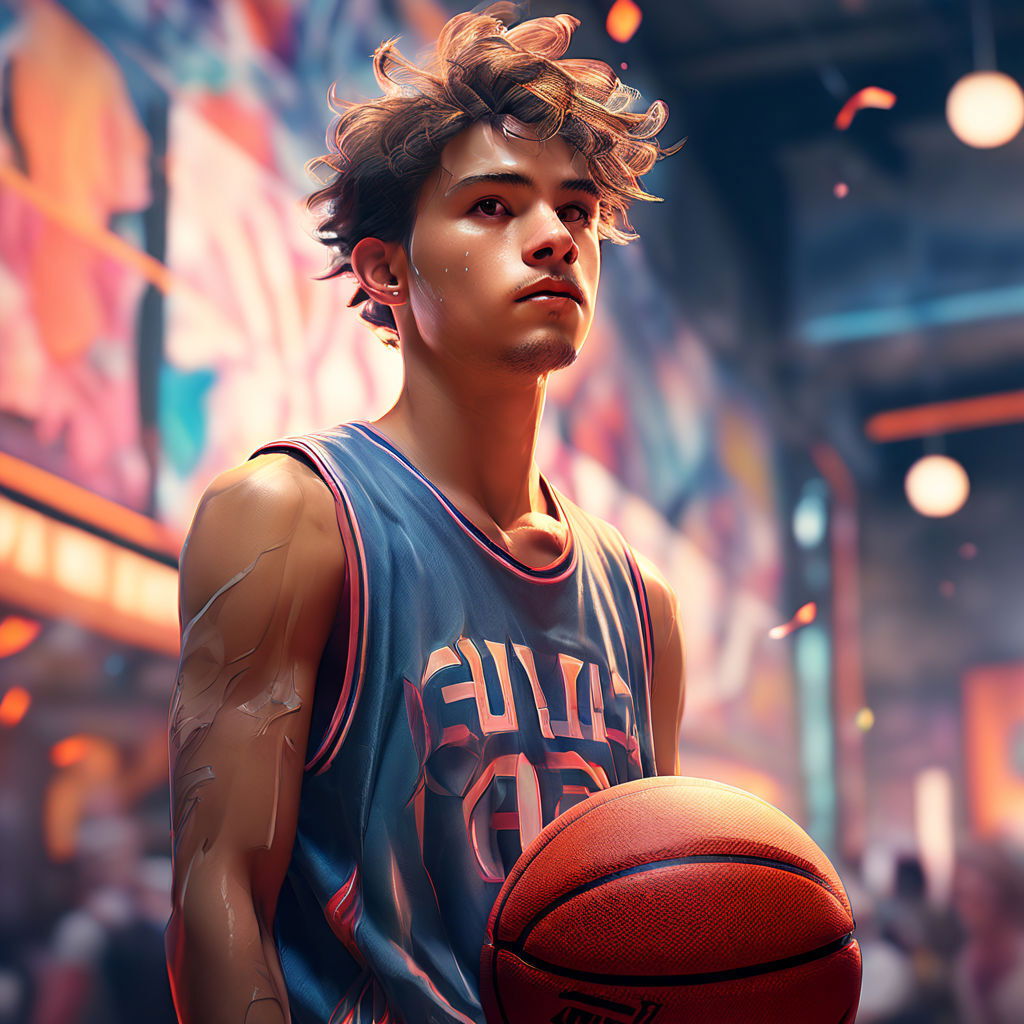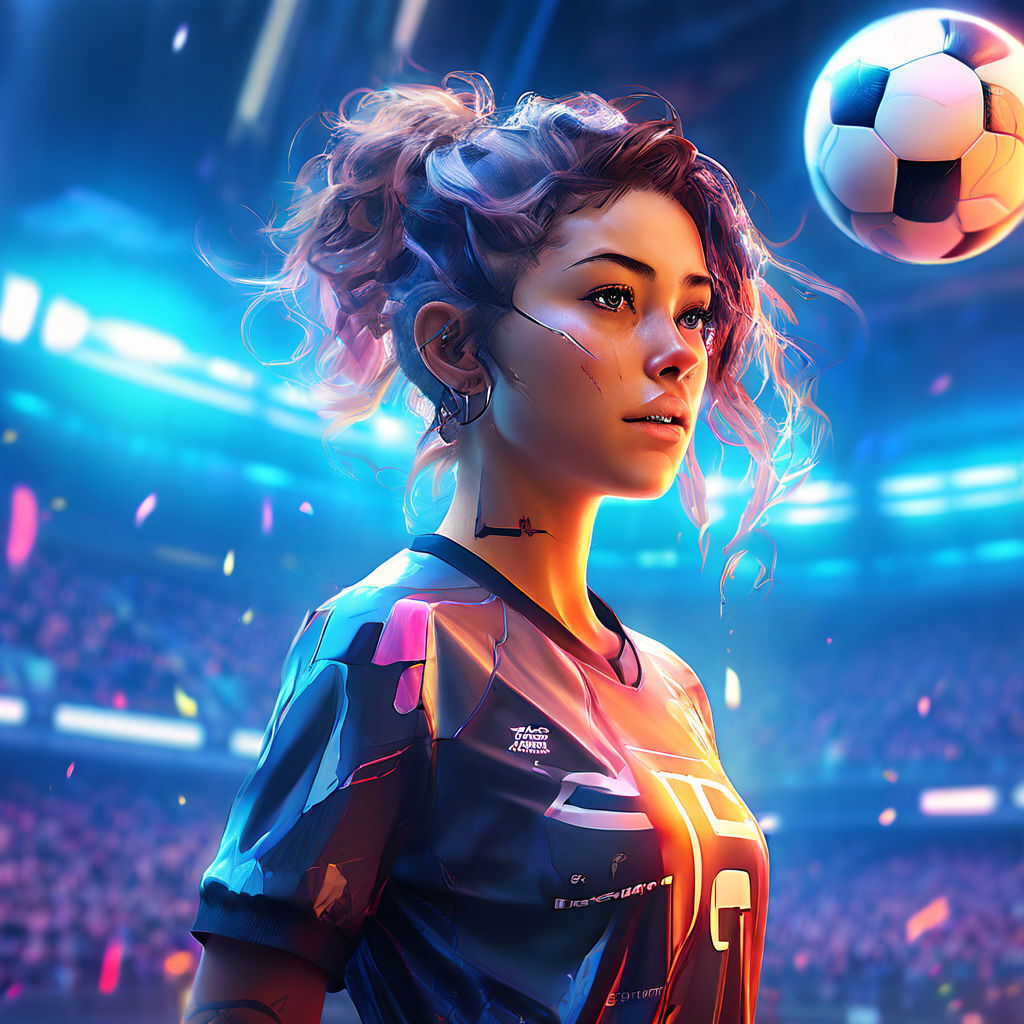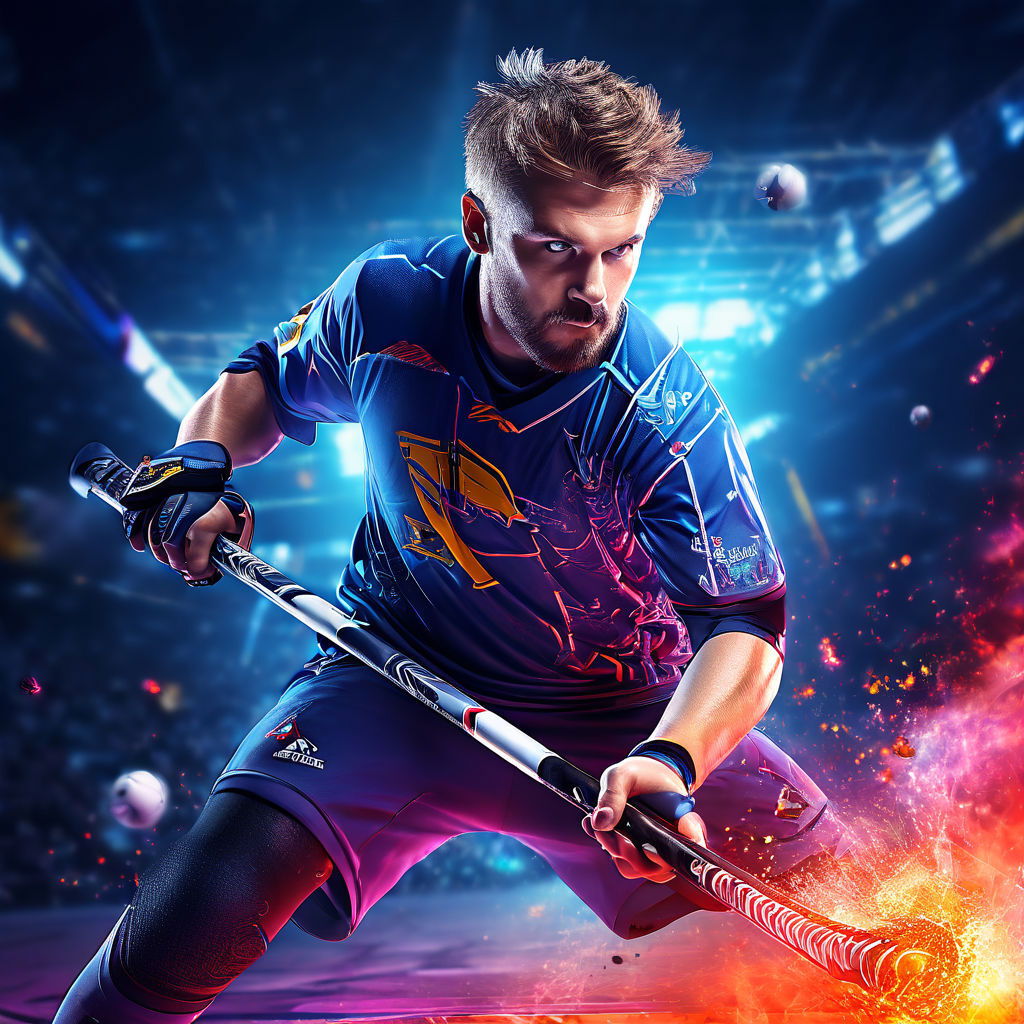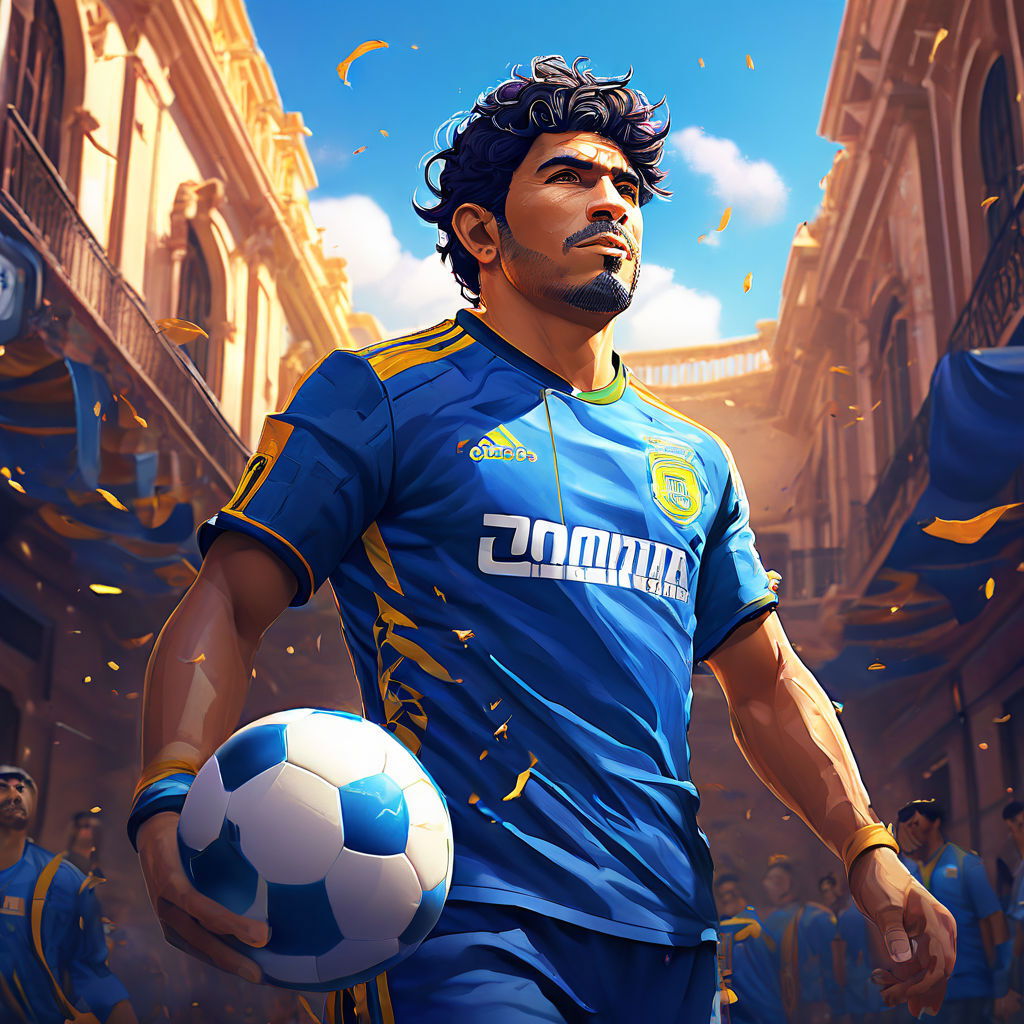interstellar eSports league
FUTURISTIC eSports SHORT STORIES BY TEGEDAO
Celestial Dunk : The Pacers' Space Odyssey

In the year 2149, the Indiana Pacers, a name once synonymous with terrestrial basketball, had morphed into a vanguard of the burgeoning field of zero-gravity eSports. Their journey from the hardwood courts of the NBA to the holographic arenas orbiting Earth captured the imagination of millions, heralding a new era in competitive gaming.
The team, now known as the Pacers Zero-G, had embraced this radical shift when Earth’s eSports leagues expanded into space. With humanity colonizing the moon and Mars, it was only natural that entertainment would follow. The Pacers, with their rich legacy of adaptation and innovation, were among the first to venture into this new frontier.
Their home was the Celestial Arena, situated on the sprawling Lunar Base Delta, a facility orbiting the moon with a view of the Earthrise on one side and the endless expanse of space on the other. Here, the Pacers trained and competed in a sport that was as much about aerial acrobatics and three-dimensional strategy as it was about speed and reflexes.
The game they played had evolved from basketball, but it was unrecognizable to those who remembered the sport in its 21st-century form. Known as Orbital Dunk, it was played in a spherical arena with goals located at opposite poles. Teams of five would navigate in zero-gravity, propelling themselves with jet packs and using magnetic boots to latch onto surfaces for brief moments of stability.
Captain Aria Lee, a former aerodynamics engineer and the Pacers' star player, had been pivotal in developing the tactics that dominated the league. Her background in physics allowed her to exploit the three-dimensional playfield in ways that baffled their opponents. Aria was known for her signature move, the "Meteor Strike," where she would launch herself from the arena's outer rim, spinning through zero gravity to slam the ball into the goal from above.
The team’s coach, an AI construct named Coach Delta, was programmed with centuries of sports knowledge and a deep learning capability that adapted real-time to the flow of the game. Coach Delta’s tactics were revolutionary, involving complex plays that utilized the full volume of the arena, turning what would have been simple maneuvers on Earth into intricate ballets of motion and timing.
Rivalries in the league were fierce, with teams from all over the Earth and its colonies vying for supremacy. One of the most intense was with the Martian Red Rovers, a team that played a brutal, fast-paced style that contrasted sharply with the Pacers' graceful, calculated approach. Their matches were events of galactic interest, broadcast in full 360-degree holography that allowed spectators to feel as if they were floating amongst the players.
Off the field, the players of Pacers Zero-G were celebrities and ambassadors of Earth culture. Their interactions with alien civilizations, who were intrigued by the human sport, led to unexpected diplomatic bonds and cultural exchanges. Aria, with her charismatic personality and brilliant play, became a figure of unity and human excellence.
The annual Galactic Games, where teams from different systems gathered to compete in various zero-gravity sports, had become the pinnacle of this new era of eSports. Here, the Pacers Zero-G aimed not only to win but to inspire. As they lined up for the opening match, Aria looked at her team, a mix of Earth-born humans and moon-raised youths, each a testament to the power of human spirit and ingenuity.
As the buzzer sounded and they launched into the arena, Aria thought about how far they had come. From a basketball team in Indiana to pioneers in a sport that symbolized humanity’s reach for the stars, the Pacers had found their place in the cosmos. They played not just for victory, but for the advancement of human connection in the vast, uncharted expanses of space.
--
Quantum Courts : The Future of Wimbledon

In the year 2203, the revered Wimbledon Championships had transcended its terrestrial bounds to become a centerpiece in the world of interstellar eSports, now hosted within the grand expanse of the Venusian Dome, a massive, transparent arena orbiting Venus. The game, once confined to the green grass of Earth, had evolved into "Quantum Tennis," a sport played in a zero-gravity environment where traditional laws of physics were bent, and the players' skills were tested in unprecedented ways.
At the heart of this transformation was Serena Tsukino, a direct descendant of tennis legends and a prodigy in her own right. Her mastery of Quantum Tennis, coupled with her heritage, had made her a fan favorite and a symbol of the sport's rich legacy and thrilling future. Serena had just entered her prime playing years and was on a quest to claim her first Venusian Slam, a title that had eluded her lineage in this new era.
The Venusian Dome was a marvel of human engineering, positioned in a stable orbit around Venus, with walls engineered from transparent nanomaterials that offered breathtaking views of the swirling clouds of the planet below and the infinite cosmos beyond. Here, players like Serena floated, tethered only by their lightweight jet packs which allowed for bursts of speed and precision movement across the court.
The court itself was a holographic marvel, capable of changing its dimensions and topology mid-match to add layers of challenge and spectacle. Gravity wells, momentum disruptors, and dimensional folds were just some of the obstacles players could manipulate to strategize their plays.
Serena's main rival was a cyborg from Mars named Rex Caliburn. His enhancements allowed for reaction times and strategies beyond human limits, setting the stage for some of the most intense and watched competitions across the solar system. Their rivalry was not just a test of physical and mental limits but also a clash of philosophy—human spirit versus technological augmentation.
The championship match was set, and as Serena floated to the baseline, the crowd—a mix of humans, androids, and other galactic beings—cheered from their viewing pods, with millions more watching from planets and moons afar. The first serve of the game was more than a start of a match; it was a showcase of human innovation and interstellar culture.
Quantum Tennis was a dance as much as a duel. Serena and Rex moved with a fluidity that seemed to defy reality, striking holographic balls that could shift phases—solid to plasma—in mid-air, requiring not just physical dexterity but quantum calculations, as each stroke could alter the trajectory in unpredictable ways.
The match was a grueling five-set epic. Serena employed a risky strategy in the final set, using her deep knowledge of quantum physics to manipulate the court's gravity wells, creating a complex pattern of ball movements that Rex struggled to anticipate. This play, later celebrated as "Serena’s Gambit," allowed her to clinch the championship point, a shot that passed through a dimensional fold and appeared directly beside Rex, unreturnable.
As she celebrated her victory, Serena's thoughts drifted to her ancestors, who had played on the simple grass courts of Earth. She felt a profound connection to them, a lineage bound not by the gravity of a planet but by the love of a game that had now stretched to the stars.
The victory was not just hers but a victory for tradition and innovation alike. As she lifted the Venusian Slam trophy, the crowd erupted in cheers, and the cosmos seemed to acknowledge the tiny, yet significant triumph of human spirit and ingenuity.
Her win was a testament to the enduring appeal of tennis, a sport that had adapted to the stars without losing its soul, ensuring its place in the future of human civilization, wherever that might be.
--
The Pulse of Cyberpunk: eSports in a Neon-Soaked Metropolis

In the neon-lit corridors of a cyberpunk megacity, the future of eSports isn't just a game; it's the pulsating heart of society itself, a dazzling fusion of human spirit and cutting-edge technology. This is a world where towering skyscrapers cast long shadows over bustling streets, and the glow of holographic ads illuminates the night, promising an escape into immersive digital realms.
At the core of this society is the Cybernetic Colosseum, a colossal structure where virtual battles rage and champions are made. The eSports arenas here are technological marvels, offering fully immersive environments that stimulate all senses. Audiences don’t just watch the games; they experience them. Through neural interfaces, spectators can feel the rush of the game, from the adrenaline of a close combat encounter to the heartbreak of a near miss.
Games have evolved from mere tests of reflexes and strategy to elaborate narratives that engage players and viewers alike on a deeply emotional level. Multi-layered storylines unfold in real-time, driven by player decisions and AI interventions. These narrative arcs can span multiple seasons, drawing in viewers who follow their favorite teams and characters with the dedication of sports fans and the fervor of binge-watchers.
In this neon world, players are as much cybernetic warriors as they are athletes. Augmented with bio-enhancements and neural implants, they possess reflexes sharper than any traditional athlete, able to process information and react within microseconds. But these enhancements come at a cost, both physical and psychological. Players must navigate not only the challenges within the games but also the complex implications of their augmentations.
However, not all is glamorous in this neon-drenched society. The stark divide between the augmented elite and the tech-poor underclass gives rise to a gritty underworld. Here, illegal hacking competitions and underground fighting leagues serve as a dark mirror to the sanctioned extravaganzas above. These shadow games often involve non-consensual augmentations and exploited competitors, a hidden but pervasive aspect of the cyberpunk eSports ecosystem.
Powerful corporations sponsor teams and control large segments of the eSports industry, wielding their influence to shape not only the games but societal norms and values. These entities are often in a symbiotic relationship with AI systems, which manage everything from game integrity to real-time personalized advertising during broadcasts.
Despite the commercialization and high stakes, a robust community thrives around cyberpunk eSports. Independent leagues, fan-created mods, and hacker collectives push back against corporate dominance, continuously innovating new ways to play and experience games. These groups not only preserve the spirit of competition but also foster a culture of resistance against the commodification of human connection and creativity.
In the heart of a cyberpunk society, eSports is more than entertainment; it is a battleground of ideologies, a canvas for human expression, and a testament to the resilience of communal joy in a high-tech world. As technology and human experience continue to merge, the evolution of eSports in these neon-soaked streets captures the essence of a society at the crossroads of dystopia and utopia, where every thrilling turn reflects the dual promise and peril of our collective future.
--
Interstellar eSports League svenska special;
Stargazers i Sfären: Innebandy Bortom Jordens Gränser

Året är 2235 och innebandy har transcenderat sina traditionella rötter för att bli en nyckelsport i den interstellära eSports-ligan. I denna futuristiska tidsålder spelar lagen i zero-gravity-arenor som svävar i omloppsbanor runt olika planeter, där spelet har förvandlats och anpassats för att möta de utmaningar som rymden medför.
Laget som står i centrum för berättelsen är Stockholm Stargazers, ett lag som startade som en liten klubb i Sveriges huvudstad och har utvecklats till en titan inom den interstellära innebandyvärlden. Deras hemarena, "The Orbital Sphere", är en teknologiskt avancerad konstruktion belägen i omloppsbana runt Mars. Arenan är sfärisk med mål som placeras på motsatta sidor av sfären, och spelarna använder jetpacks för att navigera och utföra spektakulära manövrar i nollgravitation.
Lagkaptenen, Luna Eriksson, är en veteran inom sporten och känd för sina snabba reflexer och taktiska skicklighet. Hon är särskilt uppskattad för sin förmåga att "läsa" spelet i tre dimensioner, en kritisk färdighet i zero-gravity innebandy. Luna och hennes team använder en kombination av avancerade sensorer och taktiska AI-enheter för att optimera sina positioner och rörelser under matcherna.
I zero-gravity innebandy är bollen designad med magnetiska egenskaper, vilket tillåter spektakulära skott och passningar som kan ändra riktning mitt i luften, beroende på de magnetiska pulser som spelarna och arenan genererar. Målen är också utrustade med teknologi som kan förändra öppningens storlek baserat på spelets gång, vilket skapar en dynamisk och oförutsägbar matchbild.
Stargazers största rivaler är Jupiter Jets, ett aggressivt lag som spelar en kraftfull och direkt stil av innebandy. Deras möten är alltid laddade med spänning och erbjuder några av de mest spännande momenten i ligan, med taktiska dueller och fysiska utmaningar som testar gränserna för vad som är möjligt i sporten.
Förutom den fysiska och taktiska utmaningen som zero-gravity innebandy erbjuder, fungerar sporten även som en kulturell bro mellan olika civilisationer i solsystemet. Matcher och turneringar blir tillfällen där olika arter och kulturer kan mötas, utbyta idéer och stärka fredliga relationer. Stockholm Stargazers, med sin rika historia och sitt engagemang för fair play och innovation, är ofta i centrum för dessa interkulturella utbyten.
I denna vision av framtiden är innebandy mer än bara en sport; det är en fest för mänskligt nyskapande och teknologisk framsteg. Det erbjuder en spektakulär arena för konkurrens, men också en plattform för fred och förståelse mellan de många olika befolkningarna i vårt utvidgade solsystem. Stockholm Stargazers och deras äventyr i den interstellära ligan fortsätter att inspirera och underhålla, och bevisar att även i en ålder av stjärnor och planeter, kan sporten fortsätta att ena oss.
--
Pucks and Planets: San Jose Sharks at the Edge of Space

In the year 2245, the National Hockey League as once known on Earth had expanded beyond the planet's atmosphere, evolving into a high-octane eSport spectacle known as the Galactic Hockey League (GHL). Among its most thrilling teams was the San Jose Nebula Sharks, a team that had taken its legacy from the icy rinks of California to the starlit arenas orbiting Neptune.
The Neptune Nexus was not just any arena; it was a marvel of human engineering and creativity, built within a colossal space station that orbited the gas giant. Here, the traditional hockey rink had been transformed into a spherical, zero-gravity coliseum where teams battled in three-dimensional space. The goals were no longer confined to ground level but floated at opposite ends of the sphere, accessible from any direction.
The Nebula Sharks were known for their agility and strategy. The team's star player, Captain Elena "Comet" Kowalski, had become famous not just for her skills with the puck but for her ability to navigate the three-dimensional arena with a grace that seemed almost supernatural. Players wore suits equipped with thrusters and gyroscopic stabilizers that allowed them to twist, turn, and accelerate with incredible precision.
In this new form of hockey, the puck was a small, magnetized orb controlled via magnetic fields generated by players' sticks, which were more like advanced tech wands than traditional hockey sticks. The game was faster, more unpredictable, and required a level of spatial awareness unheard of in Earth's version of the sport.
The Nebula Sharks' main rivals were the Saturn Ring Raiders, a team notorious for their aggressive playstyle and strategic genius. Matches between these two were the highlight of the GHL season, watched by billions across the solar system. Their games were intense, filled with brilliant maneuvers and breathtaking saves that pushed the limits of zero-gravity sports.
But the Galactic Hockey League was more than just a sport. It was a testing ground for new technologies that could be applied across various aspects of space life, from transportation to emergency services. The technology developed for and by the league was instrumental in advancing human colonization of the outer solar system.
The climax of the GHL season came when the Nebula Sharks faced the Saturn Ring Raiders in the championship game at the Neptune Nexus. The match was a back-and-forth battle, showcasing the best of zero-gravity hockey. Elena made a game-changing play in the final minutes, executing a complex maneuver that involved rebounding off the arena's outer shell to slip past the Raiders' goalie—a move that would become legendary.
The victory of the Nebula Sharks was celebrated not just on Neptune but across human-occupied space. Their win was more than just a triumph in sports; it symbolized the indomitable human spirit, pushing the boundaries of what was possible both in sport and in life.
As the GHL continued to grow, the San Jose Nebula Sharks remained at the heart of the league's popularity and technological innovation. Their story was one of courage, innovation, and the endless pursuit of excellence, inspiring a new generation of athletes and adventurers to dream of the stars.
This narrative reflects the transformative power of human ingenuity and the spirit of exploration, as humanity not only adapts to new environments but also redefines the very games through which we express our competitive nature and cultural heritage.
--
THE GLORY OF INTERSTELLAR eSports LEAGUE!
--

Hologram of a Hand: Maradona and the Boca Interstellar Juniors
In the year 2255, football had transformed into a spectacle that transcended time and space. The sport, once played on the grassy fields of Earth, now unfolded in the colossal Orbiting Sphere, a stadium suspended above the Earth, where teams from various planets and dimensions competed in the Galactic Football League (GFL). Among the most storied teams in this league were the Boca Interstellar Juniors, who had preserved the rich traditions of their terrestrial origins while embracing the radical possibilities of futuristic play.
Central to the Boca Juniors' legacy was an innovation that had stirred the world: the immortal hologram of Diego Armando Maradona. Using cutting-edge holographic and AI technology, Maradona was not merely a recording but a dynamic, learning entity capable of playing, adapting, and interacting with both teammates and fans. His presence was both a tribute to his historical greatness and a thrilling addition to the team's strategy.
The Orbiting Sphere was a technological marvel, featuring a transparent dome that offered spectators a breathtaking view of Earth below and the cosmos beyond. The field itself was a zero-gravity environment where traditional football rules were creatively adapted. Players wore magnetized boots that allowed them to cling to the ground or release into the air, adding a three-dimensional aspect to the game.
In this new form of football, strategies had to account for verticality as well as horizontal play. The Boca Juniors, under the guidance of the Maradona hologram, excelled at a style of play that was fluid and spectacular, merging human skill with holographic precision. Maradona’s hologram was programmed to execute his famous dribbling runs and ‘Hand of God’ maneuvers, now mythologized and allowed in the GFL's rules as a special move.
Their fiercest rivals were the Mars Red Devils, a team known for their physical and aggressive playing style, adapted perfectly to zero-gravity conditions. Clashes between the Boca Juniors and the Mars Red Devils were events of universal interest, drawing billions of viewers from across the galaxy. These matches were more than just games; they were narratives of passion, rivalry, and the clash of old traditions with new realms.
The season's highlight was the championship match between Boca Juniors and the Mars Red Devils. The game was tied with only minutes to spare. In a move that would become legendary, Maradona's hologram, channeling the spirit and flair of his past life, executed a stunning sequence of moves: a gravity-defying leap over a defender, followed by a holographic 'Hand of God' goal that sent the ball floating past the Mars goalkeeper. The crowd erupted into a frenzy, as fans, both human and alien, celebrated the sublime goal.
Maradona's hologram, while a marvel on the field, also served as a bridge between generations and cultures. His enduring legacy as one of football's greats was not only preserved but evolved into something new and extraordinary. The Boca Juniors' matches became a focal point for discussions about the ethics of AI in sports, the nature of legacy, and the future of human experience in a digital and interstellar age.
As the GFL season concluded, the Boca Interstellar Juniors, led by the spectral genius of Maradona, continued to be a beacon of innovation and excitement in the league. The story of Boca Juniors and their immortal hologram player had not just rewritten the rules of the game but had also captured the imagination of the universe, celebrating the beautiful game's eternal spirit across the stars.This tale of Boca Juniors in the future was a celebration of heritage and the unending possibilities when the realms of technology, sports, and human emotion collide in the vast theater of galactic competition.
--